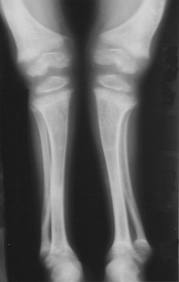Disorders
- Anorexia Nervosa
- Binge Eating Disorder
- Bitot's Spots
- Bulimia Nervosa
- Macrocytic Anemia
- Megaloblastic Anemia
- Night Blindness
- Peptic Ulcer
- Prophylaxis
- Rhodopsin
- Rickets Disease
- Scurvy Disease
- Wilson’s Disease
- Xerophthalmia
- Hemochromatosis
- Siderosis
- Thalassemia
- Sideroblastic Anemia
- Porphyria Cutanea Tarda
- Sickle Cell Anemia
- Kwashiorkor
- Menkes Disease
- Neutropenia
- Keratomalacia
- Beriberi
- Pellagra
- Macrocytic
- Megaloblastic
- Pernicious Anemia
- Scurvy
- Rickets
- Osteomalacia
- Abetalipoproteinemia
- Muscular Dystrophy
- Haemolytic Anaemia
- Cholestatic Constipation
- Pretibial Myxedema
- Cretinism Diesease
- Hypothyroidism
- Hypothyroidism
- Feline Hyperthyroidism
- Graves Disease
- Plummer’s Disease
- Thyrotoxicosis
- Acrodermatitis Enteropathica
- Congenital Hypothyroidism
- Hashimoto’s Thyroiditis
- Hyperthyroidism
- Keshan Disease
- Lose Weight with Hypothyroidism
- Metal Fume Fever
- Postpartum Thyroiditis
- Thyroid Storm
- Subclinical Hypothyroidism
Rickets

They are some illnesses that only affect children due the fact that they are not getting enough vitamins and nutrients in their diet.
Rickets is a disorder that is caused by the lack of Vitamin D, calcium or phosphate in an individual’s diet. It is a childhood illness that weakens and softens the bones.
Who can get it?
Rickets is a bone disease that primarily affects children. It usually affects children between the ages of six to twenty-four months. Infants, who are breastfeed, may not get enough Vitamin D from breast milk alone and can develop this aliment. Rickets is rare in the United States and Europe. It seems to be more prevalent in the Middle East and Africa. Rickets can also occur in individual who are on a vegetarian diet and those who are lactose intolerant, since milk products are a big source of Vitamin D.
What causes it?
Vitamin D may be absorbed from food that an individual consumes by the intestines or it may be produced by the skin when it is exposed to sunlight. Vitamin D acts as a hormone that regulates calcium absorption from the intestine to regulate levels of calcium and phosphate in the bones. If the body is deficient in Vitamin D, then it will not be able to properly regulate calcium and phosphate levels. When the blood levels of these minerals becomes too low, the body’s other hormones may stimulate release of calcium and phosphate from the bones and into the bloodstream. Children who also have disorders of the liver can develop Rickets. In some cases, children may develop Rickets if their family has a history of the aliment.
How does it happen?
When an individual does not get the recommended doses of Vitamin D, then it causes the softening and weakening of the bones.
What are the symptoms?
The symptoms of Rickets include bone pain or tenderness in the arms, legs, spine and pelvis. It also shows in skeletal deformities, such as bowlegs, projection of the rib cage, bumps in the rib cage, deformed shape of the skull, and the curving of the spine. The child also will have a tendency toward bone fractures. An individual also can have a number of dental deformities that include, delayed formation of the teeth, holes in the enamel, high incidence of cavities, and weakness of the teeth. Other symptoms include muscle cramps and impaired and stunted growth.
How can it be diagnosed?
A doctor can diagnose Rickets in a number of ways. An examination of the person’s skeletal formation is done, looking for pain in the bones. X-rays of the bones are done to get a better idea of what damaged has already begun, and in what stage the illness is in. A series of blood tests will also be conducted to determine the measure of calcium and phosphorus levels. The doctor will also do a series of urine checks to see what the calcium level is. A bone biopsy can also be conducted to confirm Rickets, but this is only done in rare cases.
What treatments are available?
The treatment of Rickets is targeted at solving the underlying cause of the condition. The replacement of deficient calcium, phosphorus, or Vitamin D will eliminate the symptoms of Rickets. It is recommended that infants and children get 200 (IU) of Vitamin D daily. Also, a diet that includes fish, liver and processed milk is encouraged. Exposure to sunlight is also important to an individual’s recovery. If the cause of Rickets is due to a metabolic problem, a prescription for medication of Vitamin D is given. Braces may be used to help correct skeletal deformities. Finally, in some cases corrective surgery is needed. Individuals, who receive treatment early enough, usually begin to see some signs of improvement after about a week.
Rickets is another childhood illness that can be corrected easily with proper medical attention and diet. It is important for children to get the adequate amount of calcium in their diets. If Rickets is not corrected while the child is in the growing process, it could lead to permanent skeletal deformities for the rest of their lives. If corrected, the child has an excellent chance to overcome the deformities that had started.
Hope this article will provide you information about rickets.
